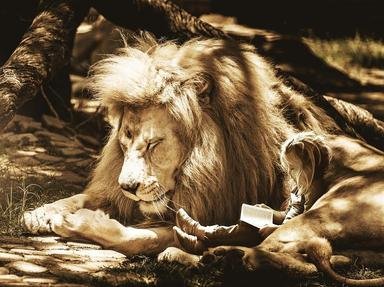Quiz Answer Key and Fun Facts
1. What female character of Homer's "The Odyssey" is a powerful sorceress who turns the hero's companions into swine?
2. A boar hunt is described in a memorable episode of the Middle English poem "Sir Gawain and the Green Knight". Which great 20th-century British author and scholar produced a translation of the poem that was published posthumously in 1975?
3. Written in the 16th century by Italian author Gianfrancesco Straparola, the literary fairy tale of "King Pig" was an influence on which well-known, frequently adapted romantic tale?
4. A character named Pigsy, a monstrous half-man, half-pig creature, appears in the late 16th-century novel "Journey to the West", one of the masterpieces of the literature of which large country?
5. Pigs, live and cooked, feature prominently in the Jacobean comedy "Bartholomew Fair", in which the author pokes fun at the hypocrisy of Puritans. What major English playwright, also known as the author of "Volpone" and "The Alchemist", wrote it?
6. In a key episode of a major Thomas Hardy novel, the eponymous protagonist - a young stonemason who aspires to be a scholar - mercifully kills a pig to spare it a slow death by bleeding. What is the title of this harrowing literary work?
7. Set in southern Italy in the late 19th century, "Canituccia" is a heartbreaking short story about the bond between a mistreated young girl and a pig. Which Italian female writer, nominated six times for the Nobel Prize in Literature, wrote it?
8. One of the main characters in William Golding's most famous novel, "Lord of the Flies", is an overweight boy nicknamed Piggy. Do any real pigs appear in the story?
9. Published in 1960 as part of the collection "Lupercal", the poem "View of a Pig" is a stark yet oddly haunting depiction of a dead pig. Which 20th-century British poet, appointed Poet Laureate in 1984, and also known for his tragic private life, is the author of this poem?
10. Margaret Atwood's dystopian novel "Oryx and Crake" depicts a futuristic world run by corporations. One of the most disturbing creations in the story are "pigoons", genetically modified pigs bred for what disturbing purpose?
Source: Author
LadyNym
This quiz was reviewed by FunTrivia editor
LeoDaVinci before going online.
Any errors found in FunTrivia content are routinely corrected through our feedback system.
